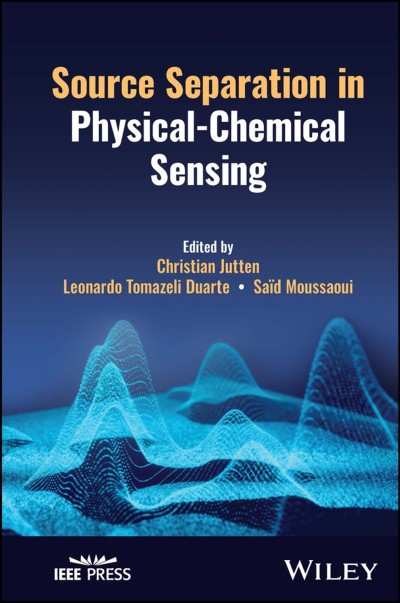Most Commented
Source Separation in Physical-Chemical Sensing - Christian Jutten




Description material

pdf | 14.1 MB | English | Isbn:9781119137276 | Author: Christian Jutten (Editor), Leonardo Tomazeli Duarte (Editor), Said Moussaoui (Editor) | Year: 2023
About ebook: Source Separation in Physical-Chemical Sensing
Source Separation in Physical-Chemical Sensing Master advanced signal processing for enhanced physical and chemical sensors with this essential guide
In many domains (medicine, satellite imaging and remote sensing, food industry, materials science), data is obtained from large sets of physical/chemical sensors or sensor arrays. Such sophisticated measurement techniques require advanced and smart processing for extracting useful information from raw sensing data. Usually, sensors are not very selective and record a mixture of the useful latent variables. An innovative technique called Blind Source Separation (BSS) can isolate and retrieve the individual latent variables from a mixed-source data array, allowing for refined analysis that fully exploits these cutting-edged imaging and signal-sensing technologies.
Source Separation in Physical-Chemical Sensing, supplies a thorough introduction to the principles of BSS, main methods and algorithms and its potential applications in various domains where data are obtained through physical or chemical sensors. Designed to bridge the gap between chemical/physical analysis and signal processing, it promises to be invaluable in many fields. Its alertness to the latest technologies and the full range of potential BSS applications make it an indispensable introduction to this cutting-edge method.
Source Separation in Physical-Chemical Sensing readers will also find:
BSS examples on chemical and physical sensors and devices to enhance processing and analysis.
Detailed treatment of source separation in potentiometric sensors, ion-sensitive sensors, hyperspectral imaging, Raman and fluorescence spectroscopy, chromatography, and others.
Thorough discussion of Bayesian source separation, nonnegative matrix factorization, tensorial methods, geometrical methods, constrained optimization, and more.
Source Separation in Physical-Chemical Sensing is a must-have for researchers and engineers working in signal processing and statistical analysis, as well as for chemists, physicists or engineers looking to apply source separation in various application domains.
In many domains (medicine, satellite imaging and remote sensing, food industry, materials science), data is obtained from large sets of physical/chemical sensors or sensor arrays. Such sophisticated measurement techniques require advanced and smart processing for extracting useful information from raw sensing data. Usually, sensors are not very selective and record a mixture of the useful latent variables. An innovative technique called Blind Source Separation (BSS) can isolate and retrieve the individual latent variables from a mixed-source data array, allowing for refined analysis that fully exploits these cutting-edged imaging and signal-sensing technologies.
Source Separation in Physical-Chemical Sensing, supplies a thorough introduction to the principles of BSS, main methods and algorithms and its potential applications in various domains where data are obtained through physical or chemical sensors. Designed to bridge the gap between chemical/physical analysis and signal processing, it promises to be invaluable in many fields. Its alertness to the latest technologies and the full range of potential BSS applications make it an indispensable introduction to this cutting-edge method.
Source Separation in Physical-Chemical Sensing readers will also find:
Source Separation in Physical-Chemical Sensing is a must-have for researchers and engineers working in signal processing and statistical analysis, as well as for chemists, physicists or engineers looking to apply source separation in various application domains.
Warning! You are not allowed to view this text.
Warning! You are not allowed to view this text.
Join to our telegram Group
Information
Users of Guests are not allowed to comment this publication.
Users of Guests are not allowed to comment this publication.
Choose Site Language
Recommended news
Commented



![eM Client Pro 9.2.1735 Multilingual [Updated]](https://pikky.net/medium/wXgc.png)






![Movavi Video Editor 24.0.2.0 Multilingual [ Updated]](https://pikky.net/medium/qhrc.png)

